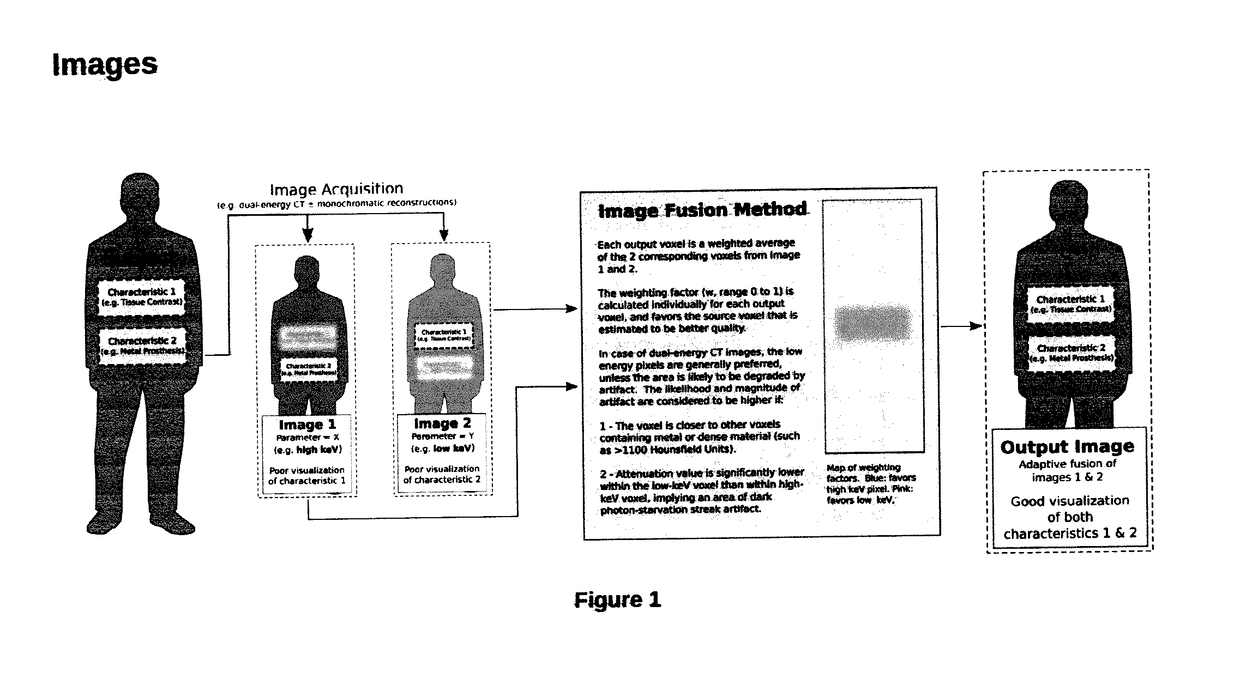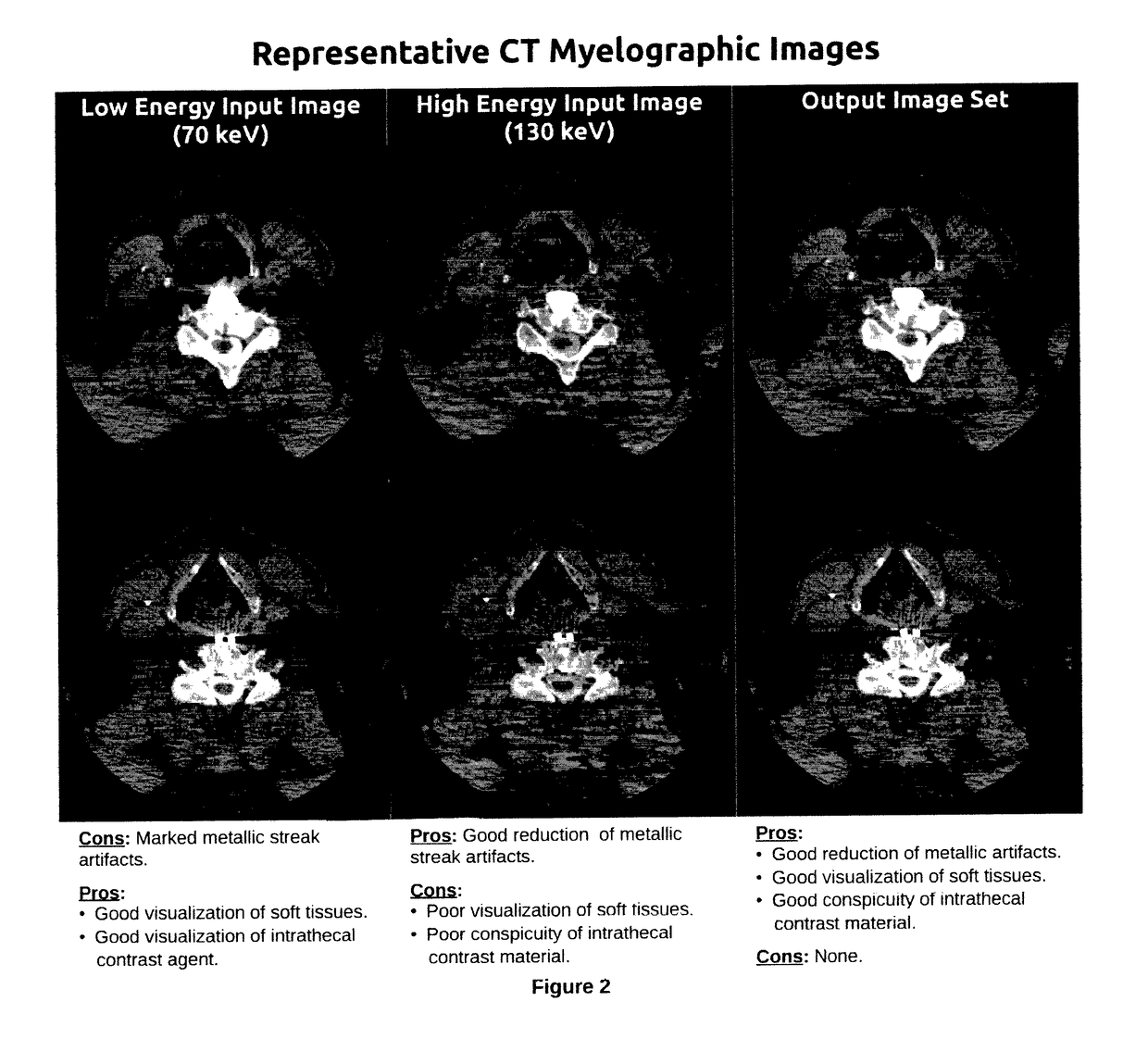Method for Reduction of Artifacts and Preservation of Soft Tissue Contrast and Conspicuity of Iodinated Materials on Computed Tomography Images by means of Adaptive Fusion of Input Images Obtained from Dual-Energy CT Scans, and Use of differences in Voxel intensities between high and low-energy images in estimation of artifact magnitude
a computed tomography and soft tissue technology, applied in image enhancement, image analysis, instruments, etc., can solve the problems of deterioration of soft tissue contrast, marked deformation of artifacts near metallic or dense objects, and inability of conventional ct scanner detector elements to distinguish between x-ray photons of different energies, etc., to achieve fast approximation
- Summary
- Abstract
- Description
- Claims
- Application Information
AI Technical Summary
Benefits of technology
Problems solved by technology
Method used
Image
Examples
Embodiment Construction
[0020]Included C++ code excerpts from an example embodiment are intended to convey the underlying methods to those skilled in the art. Although the reference code processes dual-energy CT images, essentially the same method, or some of the provided computer code, can be used to process images obtained via other modalities, such as MRI, to optimize other characteristics, such as reduction of motion artifact (as opposed to streak artifact), or increase conspicuity of pathologic processes or normal structures. Third image (or more) can be optionally incorporated into this method by including additional terms in the voxel-by-voxel weighted average described above. Such a third image can also be used as a determinant of weight (w) itself (similar or substituted for the aforementioned Metal Effect image, which is calculated rather than acquired in the example embodiment). A voxel-by-voxel parameter similar to (w) above, can also be used to represent a target monochromatic energy level rat...
PUM
 Login to View More
Login to View More Abstract
Description
Claims
Application Information
 Login to View More
Login to View More - R&D
- Intellectual Property
- Life Sciences
- Materials
- Tech Scout
- Unparalleled Data Quality
- Higher Quality Content
- 60% Fewer Hallucinations
Browse by: Latest US Patents, China's latest patents, Technical Efficacy Thesaurus, Application Domain, Technology Topic, Popular Technical Reports.
© 2025 PatSnap. All rights reserved.Legal|Privacy policy|Modern Slavery Act Transparency Statement|Sitemap|About US| Contact US: help@patsnap.com



